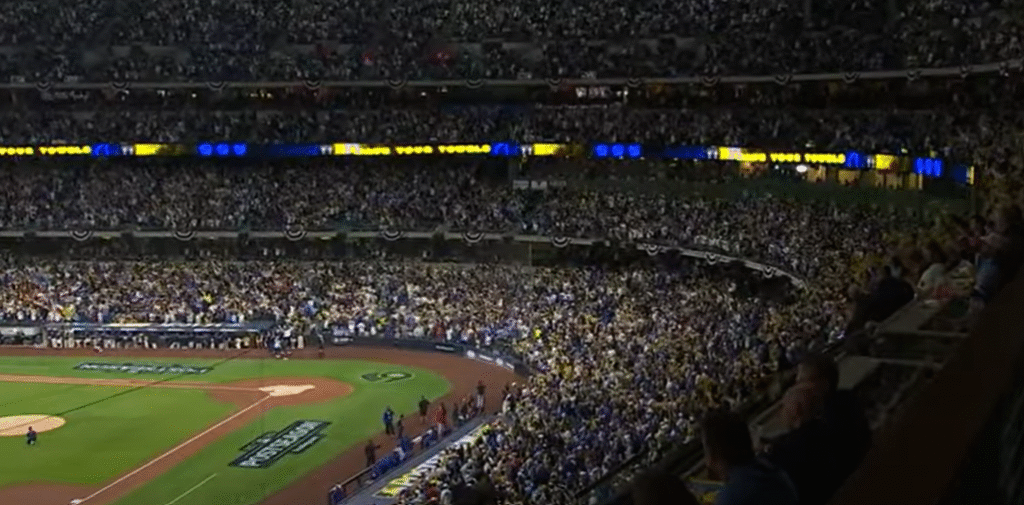A wave of Latin American talent has dramatically changed Major League Baseball over the last few decades, changing the sport’s competitive spirit and cultural cadence. The sport’s current era is defined by a tidal wave of skill, personality, and passion that started as a slow trickle of pioneers. The fact that almost one-third of active players are from Latin America is a striking indicator of how the emotional center of the game has moved south.
With more MLB players produced per capita than any other nation, the Dominican Republic is the driving force behind this change. Its training academies, which are frequently supported by major league teams, have developed into extremely effective centers for professional excellence, shaping raw potential. Young athletes who hope to one day don a Yankees or Dodgers uniform get up before the sun comes up and run drills on fields that have been exposed to the sun. In addition to honing athletic abilities, these academies have made significant improvements in education and nutrition, increasing players’ chances of long-term success after they enter the major leagues.
Teams found that Latin players had an innate understanding of the game, one that was fueled by improvisation and creativity rather than strict playbooks, by utilizing local scouting networks and sophisticated analytics. Players like Fernando Tatís Jr., whose dynamic energy and fearless approach have enthralled fans, are especially displaying that flair. His charisma, frequently combined with audacious bat flips and unbridled happiness, has come to represent baseball’s changing character.
Latin American Baseball Influence – Quick Overview
| Category | Details |
|---|---|
| Regions Represented | Dominican Republic, Venezuela, Cuba, Puerto Rico, Colombia, Panama, Mexico |
| Current Share in MLB | Nearly 30% of all active MLB players |
| Pioneers | Roberto Clemente, Luis Aparicio, Juan Marichal, Tony Pérez |
| Modern Superstars | Fernando Tatís Jr., Ronald Acuña Jr., Juan Soto, Vladimir Guerrero Jr., José Altuve |
| Major Development Hubs | MLB academies in the Dominican Republic, Venezuela, and Mexico |
| Notable Achievements | Multiple MVPs, Cy Young winners, Hall of Fame inductees |
| Key Impact | Revitalized MLB diversity, gameplay style, and international fan base |
| Reference | Britannica – Latin Americans in MLB |

Venezuela has emerged as a haven for geniuses as well. A new generation of athletes who combine technical skill with artistic flair have been inspired by the legacy of Miguel Cabrera, one of the few players to win baseball’s Triple Crown. Ronald Acuña Jr. epitomizes the spirit of this new generation with his explosive speed and self-assured swagger. In Latin America, where baseball has become a cultural icon, his performances have been especially successful in reviving MLB’s global marketability and fan engagement.
Baseball’s association with Puerto Rico has a distinct emotional significance. Roberto Clemente is still regarded as a hero for his humanitarian efforts, which went beyond athletics. Players like Francisco Lindor and Carlos Correa, who now embody a tradition of grace and leadership, are products of his legacy of excellence and empathy. Their capacity to strike a balance between personality and discipline exemplifies the professionalism and pride that Clemente promoted.
Cuba’s involvement in MLB brings a spirit of defiance and tenacity. Cuban players have demonstrated remarkable tenacity in making their mark in spite of decades of political obstacles. Cuban athletes continue to demonstrate that talent can flourish despite limitations, as evidenced by Aroldis Chapman’s lightning-fast pitches and Yordan Álvarez’s composed power at the plate. Their presence has been especially helpful in motivating the next generation and broadening the league’s style of play.
MLB organizations have made significant investments in Latin America through strategic partnerships, establishing academies that serve as a conduit between undeveloped talent and professional opportunities. These training facilities, which are mostly located in Venezuela and the Dominican Republic, have developed into cultural establishments. They are fostering ambition, discipline, and hope in addition to producing athletes. Every success story, from a small Caribbean village to a stadium that is completely sold out, serves as further evidence that when opportunity and hard work are combined, excellence is achievable everywhere.
The energy of Latin American players is what makes them so captivating. Their resilience reflects the spirit of their homelands, their celebrations reflect joy, and their movements carry rhythm. Their approach has significantly raised MLB’s entertainment value and given fans a more emotionally involved experience. Every walk-off home run and stolen base feels more dramatic and intimate. Traditional stadiums have been transformed into hubs of culture and community thanks to their passion.
The impact is not limited to the field. In addition to being champions, athletes like Juan Soto and José Altuve are also cultural icons. They work with musicians, interact with fans in multiple languages, and feature in advertisements. By transcending generations and geographical boundaries, their charisma has opened baseball to new audiences. As other sports vie for fans’ attention, baseball has remained relevant among younger fans thanks to this creative blending of sport and culture.
This relationship has been strengthened by social media visibility and television deals. Players actively share their travels online, and leagues have inked lucrative broadcasting deals throughout the Caribbean, Central America, and South America. Nowadays, it’s common to see Venezuelan fans waving flags at stadiums from Houston to San Diego, or Dominican children imitating Ronald Acuña Jr.’s swing in public parks. Baseball’s emotional resonance has been markedly enhanced by this cross-cultural fervor.
However, difficulties have also been brought to light by the rise of Latin players. Concerns about player welfare, post-career support, and contract fairness have existed for years. According to some detractors, MLB has occasionally used exploitative hiring practices that put profit ahead of safety. But thanks to changes spearheaded by advocacy organizations and the MLB Players Association, working conditions have significantly improved, and future prospects will now have access to better mentorship, healthcare, and education.
Inclusion and storytelling have been highlighted in MLB’s Hispanic Heritage campaigns in recent years. The league honors individuals ranging from Clemente to Tatís during these festivities, demonstrating how intricately Latin heritage has woven itself into the very fabric of the sport. The programs serve as reminders that diversity, solidarity, and cross-cultural interaction are essential to baseball’s success and are not merely symbolic.
